introduction
Minimal Music is alongside pop and baroque, the biggest inspiration for my music. Although the term Minimal Music is considered by virtually all composers as inadequate, it is probably here to stay. Philip Glass, for example, talks about music with repetitive structures instead of Minimal Music.
Below you'll find an overview of the most important pieces of Minimal Music, followed by some newer pieces by composers you really want to check out.
Minimal Music - the beginning
In the mid sixties, a number of composers made a radical break with the - at that time - very complex avant garde. Just as the Spanish architect Gaudi, they returned to the old meaning of the word original : back to the origins, back to the roots, back to the source.
The grandfather of this movement is the composer La Mounte Young. In 1960 he wrote the primal piece of Minimal Music : Composition 1960 no 7. It is a piece consisting of two notes that sound together for a long time. You will hear nothing but the diphthong that is held for a long time. There appears to have been a performance which lasted 24 hours.
The three main composers who followed La Mounte Young to a new musical world, were Terry Riley, Steve Reich and Philip Glass. They are the founders of a movement that quickly became known as Minimal Music. It was a term that, like Impressionism, was taken from the visual arts. Painters such as Frank Stella and Robert Rauschenberg were already known as Minimalists.
All compositions in this new musical movement from the sixties have in common that they are written with a minimum of resources. Each musical element, such as harmony, rhythm, dynamics, or instrumentation, remains the same for the duration of the whole piece, or changes only very gradually. In addition, the main compositional technique is the continuous repetition.
The use of repetition was not new. In traditional Western music repetition is widely used for a long time as part of a musical development, preferably as a dramatic development to a big climax. The Minimal Music breaks with this. These composers aren't out to build a climax. It also is not about building musical tension and relaxation. There are no contrasts in loud and soft, there are no contrasts in fast and slow, and there are no contrasts in bombastic or lyrical. After the continuous change in the avant-garde music from the fifties, these composers strive for a perfect stasis within their music.
Another feature of the early Minimal Music is the relationship with non-Western music and pop music. Both Riley, Reich and Glass were most strongly affected by influences as Indian raga music, Balinese Gamelan and West African drum music. In addition, the simplicity and the rhythms of jazz and pop music had great influence on these composers.
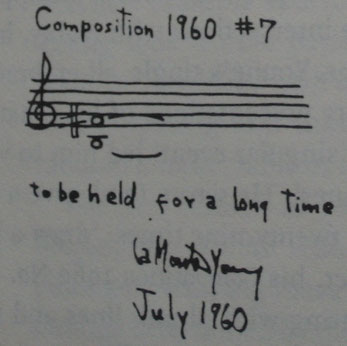
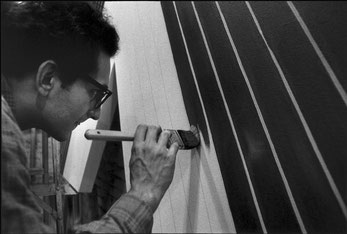
Minimal Music - terry riley
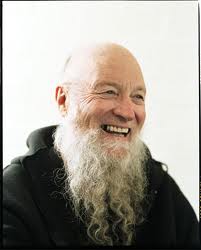
The first essential Minimal Music composition was the piece In C from 1964 by the American composer Terry Riley. The title alone - In C - was a statement. In a period when virtually only atonal music was composed, it was very revolutionary to name a piece In C. It was revolutionary to write a composition which again had a distinct root.
In C consists of fifty very short musical motifs. The piece can be carried out with any number of musicians and in any combination of instruments. The musicians have a lot of freedom. Each musician can decide for himself when he begins the first motif and how often he repeats it. Then he pauses or he goes straight to the second motif that he plays again as long as he wants. Because the musicians all take different decisions on the number of repetitions of each motif, they all go at different speeds through the piece, resulting in a rolling wave of motives. The performance can take half an hour to up to three hours.
With In C Terry Riley produced his greatest achievement. It is especially the composers Steve Reich and Philip Glass, both of them Americans, who found a large audience over the years for their Minimal Music.
Minimal Music - steve reich
Steve Reich was born in 1936 in New York. After studying at the Juilliard School, he studied African music. He also experimented with recorded music on tape recorders. He was particularly interested in making short tape loops. One day he made two identical loops which he played simultaneously on two tape recorders. Because one recorder played a fraction faster than the other, the two fragments were drifting apart, resulting in shifting patterns. Reich was fascinated by this process, and incorperated it, together with influences of African rhythms in his compositions.
An example of this is Piano Phase from 1968. The whole piece consists of a single, repeating bar. The composition is performed by two pianists. The first pianist keeps the pace right. The second pianist speeds up a tiny bit, as if he were one of the tape recorders. This acceleration goes on until his rhythm again coincides with the first pianist. If all goes well, the pianists play again in the same rhythm, only they are shifted one note from another. The second pianist accelerates again until he has moved two notes compared to the first pianist. This process continues until both pianists are at the same pace again, playing exactly the same notes.
In 1974 Reich began what would become his most characteristic work, Music for 18 Musicians. In this piece of music many new ideas popped up, even though it refers to earlier work. This was Reich's first attempt at writing for larger ensembles.


Minimal Music - Philip Glass
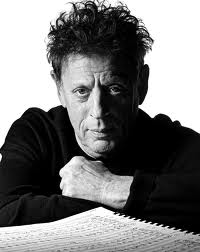
Philip Glass was born in 1937, a year later than Steve Reich. Almost simultaneously with Steve Reich he developed a musical language based on a minimum of resources. The early works of Glass consist of the repetition of short motifs, to which gradually notes were added or removed. A good example is his composition Two Pages from 1968.
Philip Glass developed this simple language very systematically. His first music was monophonic. Gradually he added more voices to it, he added harmony and different instrumental colors. In 1974 he composed Music in 12 Parts, a four-hour piece, in 12 parts, written for 12 instruments. This composition can be considered as the sum of all the compositional techniques that Glass had used in the years before. A journalist called the piece The Art of Repetition, referring to Bach's famous The Art of Fugue.
Both Music for 18 Musicians and Music in 12 Parts, can be actually no longer considered as Minimal Music. It is true that the musical language is based on the repetition of short motifs, but otherwise there is nothing minimal in this music. For example, the length of the pieces is enormous. Music in 12 Parts lasts almost four hours. Also, many other elements, which were not used in the first years of Minimal Music, such as harmony, counterpoint and change of tone colors, are back again.
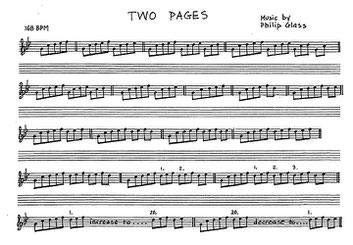
Minimal Music - INFLUENCE
The influence of Minimal Music is enormous. The language of especially Steve Reich and Philip Glass has become part of a music culture that is very widespread. Elements of Minimal Music are everywhere. Film music composers like Danny Elfman, gratefully uses techniques of Minimal Music.
In pop music, the influence of minimal music is huge. Tubular Bells by Mike Oldfield would not have been there without the influence of composers like Terry Riley, Phillip Glass and Steve Reich. The opening of this famous music from 1973 sounds like real Minimal Music.
Pink Floyd would certainly sounded different without the Minimal Music. German synthesizer artists like Klaus Schulze or Tangerine Dream took their musical language from Minimal Music. Philip Glass pops up at dance festivals in House and Trance.
And there are many composers worldwide who use elements of Minimal Music. It goes too far to name all of them. I will mention a few. Marc Mellits is a very active composer in America. He writes music in a repetitive style, but which also has the power of rock music.
In England, the influence is huge. The composer Michael Nyman (incidentally, the man who coined the term Minimal Music for the first time) has a great status, followed by Gavin Bryars, Graham Fitkin & Max Richter.
From Belgium we know Wim Mertens. In Italy, the pianist and composer Ludovico Einaudi makes furore. The composition Canto Ostinato by Simeon ten Holt is the leading composition of Minimal Music in the Netherlands.
Minimal Music has become maximal.
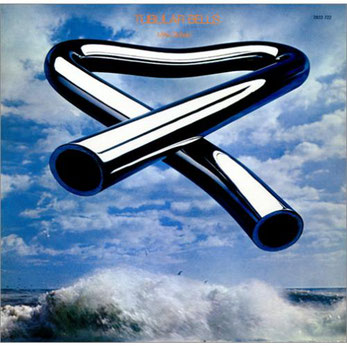
Minimal Music - Other Composers
These composers (and albums) are among my favourites.
Giovanni Sollima : Canti Rocciosi
John Metcalf : The Inner Line
Sebastian Plano : A rhythmical Part of Hearts
Peter Broderick : Float 2013
Ari Benjamin Meyers : Symphony X
Mike Oldfield : Hergest Ridge
Nicolas Lens : Terra Terra
Marc Mellits : Paranoid Cheese
Ludovico Einaudi : Time Lapse
Jeff Hamburg : Schuylkill
Wim Mertens : Partes extra partes
Clint Mansell : The Fountain
William Susman : Scatter my Ashes
Matteo Sommacal : The Chain Rules
Arianis : Songs from Mirage
Neil Campbell : Through the Looking Glass
Francesco di Fiore : Visioni
Peter Gregson : Lights in the Sky
Wojciech Kilar : Requiem Father Kolbe
William Susman : Scatter my Ashes
Max Richter : Recomposed by Max Richter
Dominic Frasca : Deviations
